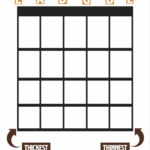Acoustic guitars are instruments that produce music by using only their physical structure to amplify the sound of the strings. Unlike electric guitars, an acoustic guitar relies on its soundboard – the top part of the guitar – to transfer the energy from vibrating strings into audible sound waves. This soundboard is crucial; without it, the vibration of the strings would barely be noticeable. The large surface area of the soundboard effectively pushes air, creating a much louder and richer sound. Furthermore, the hollow body of an Acc Guitar enhances the sound through resonance, particularly boosting bass frequencies and adding depth to the overall tone.
The Science Behind Acoustic Guitar Sound
The unique tonal characteristics of different acoustic guitars come from a combination of factors. The types of wood used (tonewoods), the internal bracing patterns, and the design of the bridge all play a significant role in how the guitar resonates and projects sound. Each of these elements contributes to a complex mix of harmonics, giving each instrument its distinct sonic signature. Fundamentally, there are two main categories of acoustic guitars: classical guitars, which use nylon strings, and steel-string acoustic guitars.
Exploring Types of Acoustic Guitars
Steel-String Acoustic Guitars
The steel-string acoustic guitar evolved from the classical guitar design but uses steel strings to achieve a brighter and more powerful sound. The dreadnought shape, popularized by C.F. Martin & Company, is a very common and recognizable body style. Dreadnoughts are characterized by a deep body and a less pronounced upper curve, giving them a somewhat square or wedge-like appearance. The Martin D-28, first released in 1931, is perhaps the most iconic dreadnought model. Beyond the dreadnought, other popular steel-string body shapes include the larger jumbo, the mid-sized auditorium (often referred to as 000), and the even smaller grand concert (or 00) style. For players seeking a smaller body with a strong sound, models like the Martin SC-13E Acoustic-Electric Guitar Natural offer a compelling option.
Classical Guitars
Classical guitars are a direct descendant of the Spanish guitar and are distinguished by their construction, size, weight, and the sound they produce. A key feature of classical guitars is the use of six nylon strings instead of the steel strings found on other types of acoustic guitars. While variations exist in shape, construction materials, and design, classical guitars generally adhere to either a modern classical shape or a historical classical shape, referencing earlier designs from regions like France and Italy. Another defining characteristic is the traditional playing style; classical guitars are typically played using the fingers to pluck the strings, rather than using a pick, which is more common with steel-string acoustic guitars.


